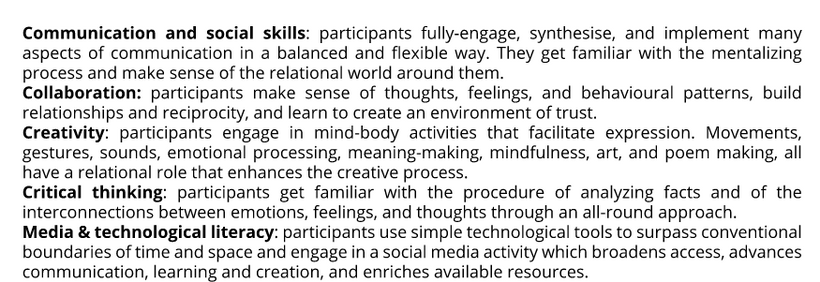“Digital learning in the pandemic, cultural heritage resources by and for educators” is a collection of learning activities by European Schoolnet and Europeana. The book offers a comprehensive breakdown of learning scenarios on art, diversity and inclusion, environment, history, language, music, philosophy and steam.
Each activity is ready to be implemented with detailed information including age, time, materials for online and offline. The guide offers educators in museums and classrooms a way to merge the digital and physical learning environments and address cultural topics that since 2020 are less accessible with the closure of most cultural outlets.
One of the first activities presented is “Developing a culture for Museums in Health and Well-being: Mentalisinng the inside story“, a project-based learning exercise for 10-12-year-olds and their families over four, 1h30, sessions online and offline.
Museums are becoming recovery spaces from the COVID-19 pandemic for our mental health and social interactions. This activity demonstrates how this transition takes place and the benefits of keeping in touch with art.
Here is a summary to demonstrate to you what to expect from the guide and cultural education today:
The educator selects digital artworks from the museum collection in one concept for the groups to work.
Developing a culture for Museums in Health and Well-being: Mentalisinng the inside story
Resources:
Online
Padlet for brainstorming
Popplet for organising information
Mentimeter for checking participants’ understanding
Zoom for an online video conference
Offline
Large pieces of paper, markers, and “art boxes” full of drawing supplies
Session 1
“Look at the picture” where each group works with four selected photographs, following the groups answer a set of questions to imagine and come into the place of the people photographed. After a short discussion, there is a reflection through art, drawing the impressions and sharing them. The educator shares the historical information of the artwork at the end of the session.
Session 2
Participants are reflecting on the previous session and sharing their everyday life examples. Breaking into smaller groups, participants select images from Europeana Special galleries using specific keywords and attach 3-4 feelings to them, thus creating their “Feelings Gallery” and museum. The session closes with discussion and evaluation.
Session 3
Begins with a mindfulness exercise and artmaking activity by drawing their emotions at this moment and sharing them. Participants then discuss the artworks and how they would experience it from within and as the creator. The educator shares the artwork’s background and information to compare with the groups’ findings, closing with an evaluation.
Session 4
Participants bring an object found outdoors and split into groups to explore Europeana’s Galleries. The session continues with a mindfulness exercise and writing a short paragraph about what they feel. At the end of the session, they create a collage of all the creations and evaluate their experience.
Benefits
Our take
This resource is invaluable to educators and the public, as it presents opportunities to learn, experience culture and deal with the effects of the pandemic in creative ways. In the past two years, museums’ mission and purpose have shifted towards educational and social spaces. This shift is necessary for our society to pull through the isolation and hardship of our reality within the pandemic. Recommend this publication to your local museum or cultural centre whether you are an educator or love museums and heritage.
I want to learn more:
Digital learning in the pandemic, cultural heritage resources by and for educators


